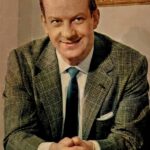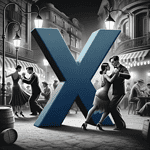If you’re a devoted follower of Argentine Tango, you’ve likely encountered the rhythmic marvel that is Juan D’Arienzo. Born on December 14, 1900, in Balvanera, Buenos Aires, and passing away on January 14, 1976, D’Arienzo left an indelible mark on the Tango world, earning him the moniker “El rey del compás” (The King of Rhythm).
Juan D’Arienzo’s Musical Journey
Juan D’Arienzo’s contribution to Tango during the golden era of 1940-1950 was distinctive. Unlike his contemporaries, he revived the essence of the “guardia vieja” with a modern twist in arrangements and instrumentation. His “típicas” orchestras recorded hundreds of discs, placing him among the best, alongside luminaries like Alfredo de Angelis, Francisco Canaro, and Aníbal Troilo.
Biography: From Balvanera to Musical Royalty
Juan D’Arienzo’s journey began in the streets of Balvanera, at the intersection of Victoria (now Hipólito Yrigoyen) and Virrey Cevallos. His musical prowess later secured him a four-decade-long exclusive contract with RCA Victor, spanning from 1935 to 1975. For many years, he was the star performer at the iconic cabaret, Chantecler, on Paraná Street.
The End of an Era: D’Arienzo’s Passing
In 1976, the Tango world mourned the loss of a maestro. Juan D’Arienzo rests in peace at the Chacarita Cemetery in Buenos Aires, leaving behind a legacy that continues to shape the Tango scene.
Timeless Tangos: D’Arienzo’s Musical Masterpieces
Undoubtedly, D’Arienzo’s orchestra left an indelible mark with the iconic “La cumparsita” by Gerardo Matos Rodríguez. This tango, recorded seven times between 1928 and 1971, remains a favorite in Milonga Dance Events. Another gem is “La Puñalada,” recorded four times between 1937 and 1963, showcasing the orchestra’s versatility.
The Maestros Behind the Microphone: Great Cantores
D’Arienzo surrounded himself with exceptional singers throughout his career. From Carlos Dante in 1928 to Osvaldo Ramos in 1975, each contributed to the orchestra’s rich vocal legacy.
Filmography: The Maestro on Screen
Apart from his musical prowess, D’Arienzo also graced the silver screen in films like “Una ventana al éxito” (1966) and “La voz de mi ciudad” (1953).
10 Most Important Tango Songs by Juan D’Arienzo
- La cumparsita (Instrumental)
- Recording Year: 1937, 1943, 1951, 1963, 1971
- Orchestra: Juan D’Arienzo
- Singer: Instrumental
- Details: A timeless classic and the most recorded tango, known for its characteristic arrangement.
- La Puñalada (Instrumental)
- Recording Year: 1937, 1943, 1951, 1963
- Orchestra: Juan D’Arienzo
- Singer: Instrumental
- Details: A rhythmic masterpiece, echoing the intensity of the knife-thrust it is named after, showcasing D’Arienzo’s versatility.
- El Huracán (Instrumental)
- Recording Year: [Year]
- Orchestra: Juan D’Arienzo
- Singer: Instrumental
- Details: A storm of passion and energy, this instrumental piece is a whirlwind on the dance floor.
- Comme il Faut (Instrumental)
- Recording Year: [Year]
- Orchestra: Juan D’Arienzo
- Singer: Instrumental
- Details: True to its French name, this piece is “as it should be,” a perfect example of D’Arienzo’s precise and elegant style.
- Canaro en París (Instrumental)
- Recording Year: [Year]
- Orchestra: Juan D’Arienzo
- Singer: Instrumental
- Details: A musical journey to the streets of Paris, capturing the essence of the city in every note.
- Quejas de bandoneón (Instrumental)
- Recording Year: [Year]
- Orchestra: Juan D’Arienzo
- Singer: Instrumental
- Details: The sorrowful lament of the bandoneón, expressing the melancholy side of Tango with D’Arienzo’s signature rhythm.
- Frente al mar (Canta: Jorge Valdez)
- Recording Year: [Year]
- Orchestra: Juan D’Arienzo
- Singer: Jorge Valdez
- Details: A lyrical journey facing the sea, with Jorge Valdez’s vocals adding a soulful dimension to D’Arienzo’s composition.
- No te quiero más (Canta: Mario Bustos)
- Recording Year: [Year]
- Orchestra: Juan D’Arienzo
- Singer: Mario Bustos
- Details: Mario Bustos’ emotive rendition brings depth to this tango, expressing the theme of unrequited love.
- Mi dolor (Canta: Osvaldo Ramos)
- Recording Year: [Year]
- Orchestra: Juan D’Arienzo
- Singer: Osvaldo Ramos
- Details: Osvaldo Ramos’ vocals infuse a poignant touch to this tango, exploring themes of pain and heartache.
- Adiós Chantecler (Canta: Jorge Valdez)
- Recording Year: [Year]
- Orchestra: Juan D’Arienzo
- Singer: Jorge Valdez
- Details: A farewell to the iconic Chantecler cabaret, this piece is a nostalgic and evocative part of D’Arienzo’s repertoire.
Frequently Asked Questions about Juan D’Arienzo
What makes D’Arienzo’s style unique?
D’Arienzo’s distinctive style blends the classic “2 × 4” rhythm with modern arrangements, creating a dynamic and energetic Tango experience.
How did D’Arienzo influence the Tango scene in Buenos Aires?
D’Arienzo’s return to the roots of Tango with a contemporary twist revitalized the genre, making it accessible and appealing to a new generation.
How many times did D’Arienzo record “La cumparsita,” and why is it significant?
D’Arienzo recorded “La cumparsita” seven times throughout his career, in 1928 with Carlos Dante, in 1929 with Raquel Notar, and instrumentally in 1937, 1943, 1951, 1963, and 1971. This tango is significant for its timeless appeal, marked by a characteristic arrangement that has made it the most recorded and recognizable tango in history.
Who were the notable singers that collaborated with D’Arienzo?
Throughout his illustrious career, Juan D’Arienzo collaborated with exceptional singers. Some notable names include Carlos Dante, Francisco Fiorentino, Alberto Echagüe, Jorge Valdez, and Osvaldo Ramos, among others. Each singer brought a unique vocal quality to D’Arienzo’s orchestras, contributing to the richness of his musical legacy.
Conclusion: Dancing to the Rhythm of D’Arienzo
In the world of Argentine Tango, Juan D’Arienzo’s legacy remains vibrant and influential. His music, marked by the heartbeat of the “2 × 4,” continues to echo through the milongas, ensuring that the King of Rhythm lives on in the hearts of Tango enthusiasts worldwide.
Notable Sources:
- Manrupe, Raúl; Portela, María Alejandra (2001). Un diccionario de films argentinos (1930-1995).
- Gobello, José. “Juan D’Arienzo.” Archived link






